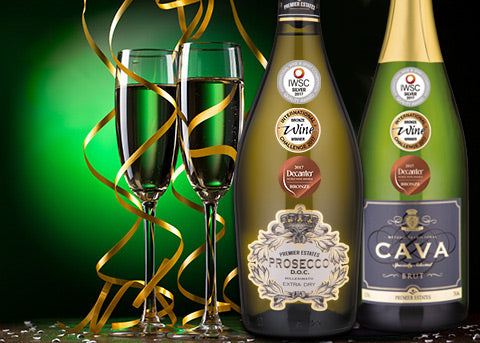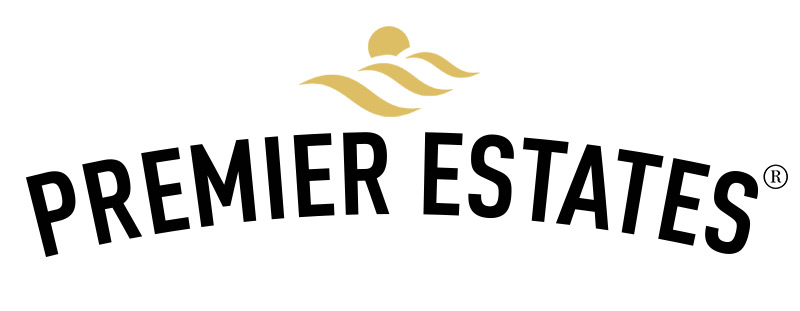Spanish Cava or Italian Prosecco?

Two Very Different Multi Award Winners
It goes without saying that wine is incredibly subjective and every wine drinker has their own personal opinion and their own completely individual senses of taste and smell. Some of our customers say that they prefer our Prosecco to our Cava and some say the complete opposite. Some even say that our Prosecco is better than Champagne but we know that it’s all about personal preference.
That’s absolutely fine with us, at the end of the day we just want happy, satisfied customers and that’s why our wine production team put just as much effort into the refinement of our Spanish Cava recipe and production process as they do into that of our Prosecco.
Any reasonable experienced sparkling wine drinker will know that Cava and Prosecco are very different wines which appeal to our senses in different ways. This article aims to highlight exactly what makes our two sparkling wines so different and why they are both so highly regarded in the wine industry.
Making Premier Estates Spanish Cava
A very specific blend of Macabeo, Xarel-lo and Parellada grapes go into our particular Spanish Cava. These grapes are grown in Penedès in the Catalonia region of Spain for the production of our Cava but are also used to make white wines which are more acidic as they are more suited to early consumption or for blending with other grape types. These three grapes are used as their wines tend to be less prone to oxidisation making them ideal for producing young white wines.
The effect of the sun, rainfall and chemical make-up of the Catalonian vineyard soil on these grapes varieties is what makes our Cava so very different to the senses from other sparkling wines.
The Cava Production Method
Our Cava is made using “la méthode traditionnelle” also known as the elaboration method. Only Cava made using this process can legitimately include the word “Cava” on the bottle label, in accordance with rules outlined by the Spanish sparkling wine making governing body.
The elaboration method has an extra process added on to the regular wine making process and takes at least around 36 weeks. After the alcoholic fermentation has taken place, the Cava is then put into bottles and a precise amount of yeast and sugar are also added to the liquid. This kicks off a secondary fermentation process, producing the carbon dioxide bubbles characteristic of a Cava sparkling wine. The quantity of yeast and sugar added dictates whether the Cava is Frizzante (slightly sparkling) or Spumante (lots of fizz). This step in the process is closely observed. Initially, the bottles are laid horizontally in a rack and they then follow the elaboration stages, giving the process its name, as the bottles are then slightly angled with the Cava bottle neck pointing downwards. Each bottle is turned, daily, by about 45 degrees as the sediment starts to settle in the neck of the Cava bottle.
After a while, when the wine sediment has all settled in the bottle neck, this section of the liquid is frozen and the ice plug which forms is then taken out, assisted by the pressure build up in the bottle due to the carbon dioxide forming in it and so the sediment is removed from the Cava leaving a clear, sparkling liquid. This step of the process is called “disgorgment”.
The final part of the production process of our Cava is the addition of the “expedition liquor” which tops up the bottle content which was removed in the disgorging process. We can add aromatic hints and subtle flavours at this stage to enhance our Cava. The cork and wire cage are then used to seal the bottles. The wire cage is very important for Cava sparkling wine, as the pressure of the carbon dioxide in the bottle is the same as that of the air inside the tyre of a large truck. This is the reason for the Cava bottle glass being so thick. A normal still wine bottle would simply explode due to the pressure.
Making Premier Estates Prosecco
Our Prosecco is made using Glera grapes exclusively, which are grown in the Veneto region of north eastern Italy in some of very best vineyards. The Glera grape is also known as the “Prosecco” grape and its origins can be traced back through many hundreds of years of wine making history to this region of Italy.
The Prosecco Production Method
The most common production process for Prosecco, often referred to as the “Charmat Method”, is the one used by the team at Premier Estates Wine. It was named after Frenchman Eugène Charmat who was a pioneer using large stainless steel tanks for the secondary fermentation stage of Prosecco.
The Glera grapes are gently pressed and the “must” produced is transferred to a stainless steel tank. A carefully measured quantity of yeast is then added to enable the grape must sugars to turn into alcohol. This primary fermentation process can take around 2 to 3 weeks. The secondary fermentation involves the must being put into pressurised stainless steel tanks. More carefully measured amounts of sugar and yeast are added to the liquid which encourages the formation of carbon dioxide to produce a sparkling wine. Once the wine has attained the required alcohol level, it is chilled and carefully before being bottled under pressure. This stage takes about 4 weeks.
The Taste and Bouquet Differences between Cava and Prosecco
The differences in the types of grape used and the production methods for Cava and Prosecco, account for the differences between the two types of sparkling wine. The blending of different grape types in Cava produces a dry sparkling wine with a greater complexity than that of Prosecco. Prosecco tends to be a lighter, more fruity wine on the sweet side of dry. There is a lot to like about both of these types of sparkling wine and many of our customers like them both equally.
What sort of awards have our Cava and Prosecco won?
Both our Spanish Cava and our Italian Prosecco have been awarded a silver medal in the 2017 International Wine and Spirits Competition (IWSC). They have also both been awarded bronze medals at the International Wine Challenge (IWC) and the Decanter World Wine Awards. These competitions involve blind tastings by some of the world’s most highly regarded expert sommeliers. Our Cava and Prosecco also faced some fierce competition from many dozens of the wine world’s biggest brands. The fact that our sparkling wines shone through is testament to the hard work that goes into the production of each.
So, on to the burning question - Why are Cava and Prosecco so much less expensive than Champagne?
There are many factors which contribute to the fact that Champagne is usually the more expensive of the three sparklers:
- The Champagne production process is a longer, more labour intensive affair than that of either Cava or Prosecco mostly due to the extended ageing process.
- The land which is home to the vineyards where the grapes destined to be made into Champagne grow, is expensive and is in great demand.
- Champagne is an established luxury product and a legendary vintage will fetch huge prices due to its rarity. The price reflects its status in the wine world.
Whilst both Cava and Prosecco are the preferred sparkling wines of many consumers, they don’t have the elevated status of Champagne and are not regarded as a superior luxury product. We’re not complaining though, if we can supply a great value Cava and Prosecco to our customers and provide them with that decadent feeling of indulgence that comes with drinking a high quality sparkling wine without breaking the bank, then we’re all happy.

